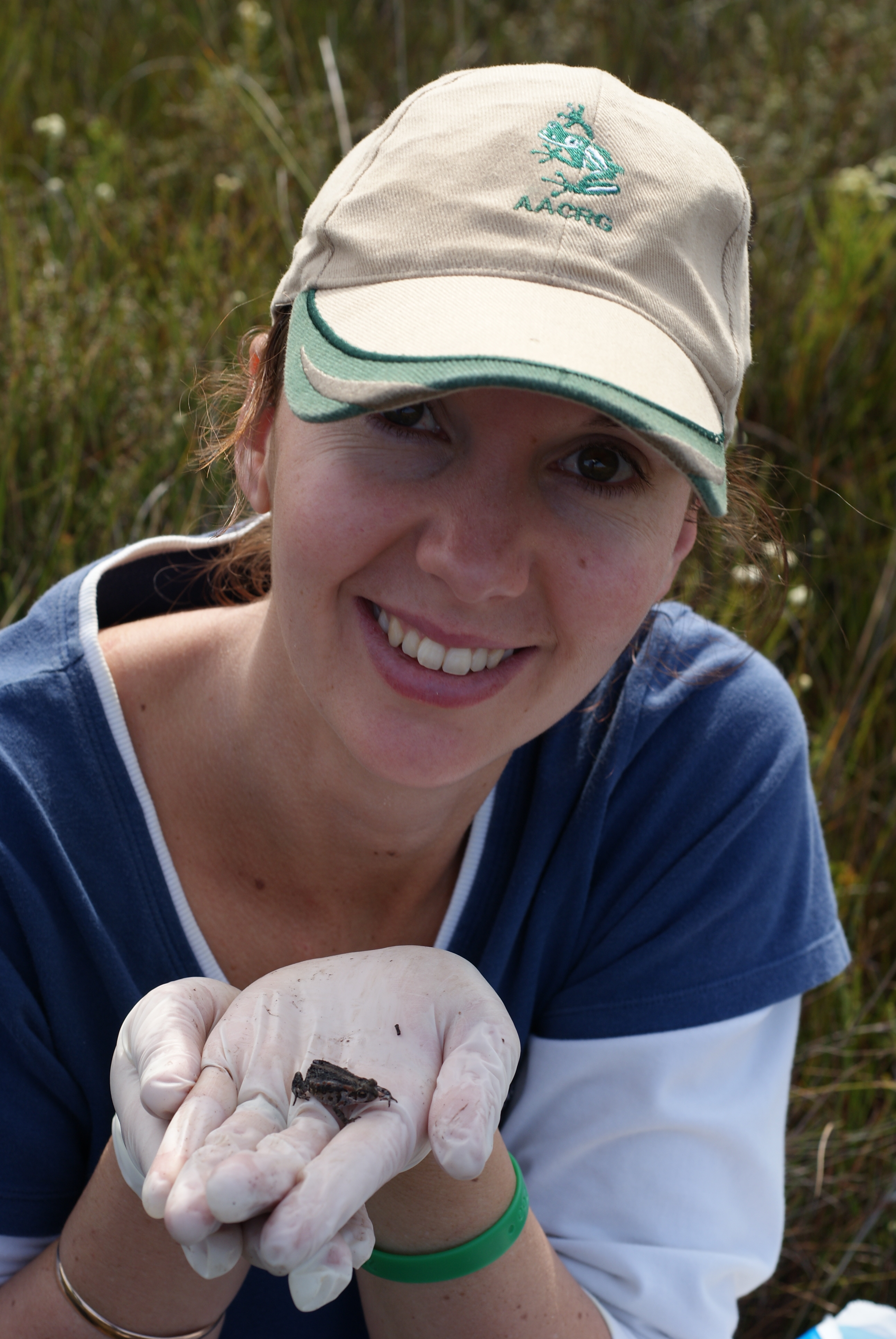Can you tell us a little bit about yourself, Jeanne?
I grew up in a small farming com-munity, under the stunning mountains of the southern Drakensberg. My family are largely still based here and I spend as much time in the area as possible. At home I am mom to two busy boys, 7 and 10, and homeschooling during Covid lock-down is taking me to new levels of an already hectic life-work balancing act! I manage the Threatened Amphibian Programme of the Endangered Wildlife Trust, currently with a team of nine people working across three provinces in South Africa. By using threatened frog and reptile species as flagships for habitat protection and management, we work to implement real conservation action on a group of animals that otherwise receives little attention.
 You have recently won the prestigious 2020 Whitley Award. Congratulations on it! Can you tell us more about your award-winning work on amphibian conservation?
You have recently won the prestigious 2020 Whitley Award. Congratulations on it! Can you tell us more about your award-winning work on amphibian conservation?
Thank you! Yes, I have been selected from an original 112 applicants as one of six winners for this year’s Whitley Awards. It is the only winning project this year focused on amphibians, and one of three representing projects from Africa. This project is focused on 8 of South Africa’s threatened frogs across three provinces of South Africa, for which we will initiate habitat protection to secure a total of 20,000 hectares of important amphibian habitat. I will also led the revision of the next 10-year strategy for amphibian conservation and research in South Africa, and bring to completion several conservation action plans for threatened species. The Whitley Award is allowing us to expand our work more into the Western Cape, where most of the country’s threatened and endemic species occur.
What is your favourite amphibian species and why?
Of course there are many to choose from, and all species are fascinating given their incredible adaptations to each and every habitat niche that amphibians fill – from the frozen north to extreme deserts, but probably one my favourite species that we work on is the Endangered Kloof Frog, Natalobatrachus bonebergi. It occurs in forested ravines and is a handsome little frog superbly adapt-ed to its forest-floor and stream life. The females lay eggs above quieter sections of the stream, in which the tadpoles develop and then drop down into the water below to complete metamorphosis. We use these unique egg clumps to monitor the species through citizen science. What can we all do to help protect amphibians? Learn more about them! There are so many great resources and knowledge of your local amphibians is the doorway to appreciation and changing behaviours towards conservation of species and their habitats. Rewild your garden – use indigenous plants and if you can, install a pond. Be conscious of your consumer choices – don’t use harmful chemicals in your home and garden and think about how the food you eat was produced and the journey it took to get to your plate.
By Luis Fernando Marin da Fonte, Amphibian Survival Alliance
